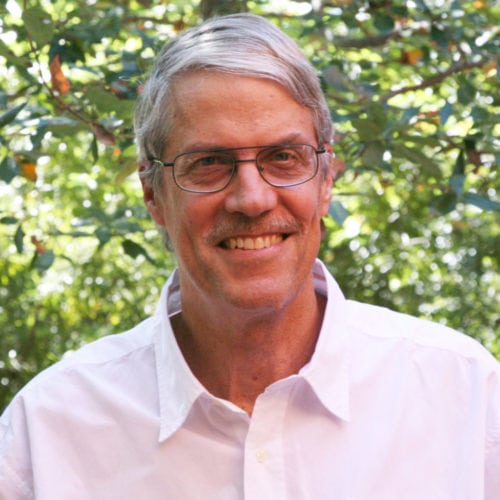Education
Ph.D. – University of California, Santa Barbara
Research Interests
Research Interests
- Climate change, ocean acidification
- Seasonal changes in coral tissue and symbiotic alga parameters
- Physiological and genotypic attributes of different zooxanthella-host holobionts
- Bleaching of reef corals
- Settlement and metamorphosis of larvae
- Strobilation of scyphistomae of the upside-down jellyfish Cassiopea
Research Projects
Our enduring objectives have been to understand fundamental aspects of symbiotic dinoflagellate (Symbiodinium) distribution, acquisition and functionality in their cnidarian (coral, jellyfish and anemone) and molluscan (giant clam) hosts. We employ molecular, genetic, biochemical and physiological techniques to resolve how genotypic and geographic differences influence the distribution, host-specificity, environmental specialization of these organisms. We also pursue how changing environmental factors correlate with recent onslaughts of bleaching and death in coral reefs, the biomass of corals and density/chlorophyll/photosynthetic efficiency of Symbiodinium, and the use of carbon by corals and Symbiodinium living inside of cnidarians.
Selected Publications
Fitt WK, Trench RK (1983) Endocytosis of the symbiotic dinoflagellate Symbiodinium microadriaticum Freudenthal by endodermal cells of the scyphistomae of Cassiopeia xamachana and resistance of the algae to host digestion. J. Cell Science 64: 195-212 Link
Fitt WK, Trench RK (1983) Infection of coelenterate hosts with the symbiotic dinoflagellate Symbiodinium microadriaticum. In: Endocytobiology, eds., W. Schwemmler and H.E.A. Schenk, Walter de Gruyter. Vol. 2: 675-681 Link
Fitt WK (1984) The role of chemosensory behavior of Symbiodinium microadriaticum, intermediate hosts, and host behavior in the infection of coelenterates and molluscs with zooxanthellae. Mar Biol 81: 9-17 Link
Fitt WK, Hofmann DK (1985) Chemical induction of settlement and metamorphosis of planulae and buds of the reef-dwelling coelenterate Cassiopeia andromeda. Proc Fifth Int Coral Reef Symp 5:239-44
Fitt WK (1985) Effect of different strains of the zooxanthella Symbiodinium microadriaticum on growth and survival of their coelenterate and molluscan hosts. Proc Fifth Intl Coral Reef Symp 6:131-136
Wolk M, Fitt WK, Rahat M, Hofmann DK (1985) Cholera toxin and thyrotropine can replace the natural inducers for metamorphosis of larvae and buds of the scyphozoan Cassiopeia andromeda. Roux’s Arch. Developmental Biology 194: 487-490 Link
Fitt WK, Hofmann DK, Wolk M, Rahat M (1986) Requirements of exogenous inducers for the development of axenic larvae and buds of Cassiopeia andromeda (Cnidaria: Scyphozoan). Mar Biol 94:415-422 Link
Hofmann DK, Fitt WK, Fleck J (1996) Checkpoints in the life-cycle of Cassiopea spp: control of metagenesis and metamorphosis in a tropical jellyfish. Int. J. Dev. Biol. 40:331-338 Link
Fitt WK, Costley K (1998) The role of temperature in survival of the polyp stage of the tropical rhizostome jellyfish Cassiopea xamachana. J. Exp. Marine Biology and Ecology 222: 79-91 Link
Fleck J, Fitt WK (1999) Degrading mangrove leaves of Rhizophora mangle provide a natural metamorphic cue for the upside-down jellyfish Cassiopea xamachana. J. Exp. Marine Biology and Ecology 234: 84 Link
Fleck J, Fitt WK, Hahn MG (1999) A proline-rich peptide originating from decomposing mangrove leaves is on natural metamorphic cue of the tropical jellyfish Cassiopea xamachana. Mar Ecol Progr Ser 183:115 Link
Fitt WK, Gates R, Hoegh-Guldberg O, Bythell JC, Jatkar A, Grottoli AG, Cabrera MCG, Fisher P, Lajuenesse TC, Pantos O, Iglesias-Prieto R Franklin DJ, Rodrigues LJ, Torregiani JM, van Woesik R, Lesser MP (2009) Response of Two Species of Indo-Pacific Corals, Porites cylindrica and Stylophora pistillata, to Short-Term Thermal Stress: The host does matter in determining the tolerance of corals to bleaching. JEMBE 373:102-110 Link
Todd BD, Thornhill DJ, Fitt WK (2006) Patterns of inorganic phosphate uptake in Cassiopea xamachana: a bioindicator species. Mar Pollut Bull 52:515–521 Link
Mellas R, Fitt WK, Coffroth MA (2014) Variation in symbiont uptake in the early ontogeny of the upside-down jellyfish, Cassiopea spp. JEMBE 459:38-44 Link
Kemp DW, Thornhill DT, Rotjan RD, Iglesias-Prieto R, Fitt WK, Schmidt GW (2015) Spatially-distinct and regionally-endemic patterns of symbiotic associations in a threatened Caribbean reef-building coral. Coral Reefs 34:535-547 Link
Tansik AL, Fitt WK, Hopkinson BM (2015) Extracullular carbonic anhydrase in three Caribbean corals: quantification of activity and role in CO2 uptake. Coral Reefs 34:703-713 Link
Hopkinson BM, Tansik AL, Fitt WK (2015) Internal carbonic anhydrase activity in the tissue of scleractinian corals is sufficient to support proposed roles in photosynthesis and calcification. Journal of Experimental Biology 281:2039-2048 Link
Kemp DW, Ruzicka RR, Colella MA, Porter JW, Fitt WK (2016) Invited contribution for special issue of Ecosphere: Life after cold anomaly: physiological and demographic effects of Florida Keys reef-building corals. Ecosphere 7:e01373 Link
Tansik AL, Fitt WK, Hopkinson BM (2017) Inorganic carbon is scarce for symbionts in scleractinian corals. Limnol Oceanogr 2045-2055 Link
Ohdera A, …. Fitt WK, Medina M (2018) Upside-down but headed in the right direction: Review of the highy versatile Cassiopea xamachana study system. Frontiers in Science 6 Link

